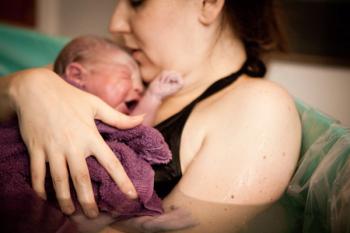
Laparoscopic Surgical Treatment for Stress Urinary Incontinence
Urinary incontinence is the involuntary loss of urine to the degree that is socially and hygienically unacceptable to the patient. The amount of leakage, which varies from a few drops to a large gush, usually increases with age.
Introduction
Urinary incontinence is the involuntary loss of urine to the degree that is socially and hygienically unacceptable to the patient. The amount of leakage, which varies from a few drops to a large gush, usually increases with age. However, urinary incontinence is not a normal consequence of aging. There are several different types of urinary incontinence:
Genuine stress incontinence is leakage resulting from any type of straining (coughing, laughing, sneezing, or lifting), that puts pressure on the bladder.
Urge incontinence is leakage from an overactive bladder. which cannot be suppressed and controlled.
Mixed incontinence is a combination of genuine stress and urge incontinence.
Overflow incontinence is leakage occurring with overdistention of the bladder, this usually results from partial obstruction of the urethra, thereby causing a constant dripping of urine.
Treatment for urinary incontinence varies depending on the type of incontinence. The first step in treatment is accurate diagnosis. This consists of the patient’s medical and urological history, physical and pelvic examination, and some simple office tests, such as post void residual urine (the amount of urine left in the bladder after voiding), Q-tip test (this tells us how mobile the urethra is, and if there is an anatomic component to the incontinence). Additional tests may be necessary in more complicated cases. These may include multichannel urodynamic studies, which test the dynamics of various phases of bladder function, including the bladder’s filling, storage, and emptying phases, plus nerve conduction . A cystoscopic examination may also be necessary if a patient exhibits any bladder irritability with incontinence.
Conservative therapy may involve hormonal replacement, medication, pelvic floor exercises, bladder retraining, and life style modification such as weight reduction or avoidance of foods that irritate the bladder. Other options include the use of a urethral plug or vaginal pessary. Surgical treatment is only effective with genuine stress urinary incontinence, in which the urethra becomes either hypermobile and unstable or it's intrinsic sphincter becomes incompetent, resulting in urine leakage with physical stress. The goal of surgery is to stabilize the hypermobile urethra and restore the competence of the urethral sphincter. Over 200 different anti-incontinence surgical procedures have been reported in the literatures, the vast majority of them have poor long term results. Recently there seems to be a consensus, especially among gynecologists and urogynecologists, that retropubic colposuspension (Burch procedure) is the surgical choice for incontinent patients with hypermobile urethra and suburethral sling procedure for patients with urethral sphincteric deficiency. With advanced technologic development in laparoscopic and video equipment and improved skill in performing operative laparoscopy, we have no difficulty in performing the Burch and suburethral sling procedures for our patients suffering from genuine stress urinary incontinence.
Advantages of Laparoscopic Surgery for Urinary Incontinence
The laparoscope is a small telescope-like instrument (one half to one centimeter in diameter) inserted into the abdominal cavity through a tiny incision inside the navel. A bright light directly shines onto the operative field through the laparoscope, and with a very sophisticated video camera, the operative field can be greatly magnified onto a high resolution video monitor. This allows the surgeon to view the operative field in superb detail. With such visibility, the surgeon can then perform accurate tissue dissection in their right planes, thus greatly reducing blood loss, place sutures precisely, approximate tissues without undue tension, avoid damaging blood vessels and achieve perfect hemostasis. In minimally invasive surgery with a laparoscope, a large abdominal incision can be avoided, blood loss minimized, tissue handled very gently, and disruption to the surrounding abdominal and pelvic organs greatly reduced. The patient typically experiences much less discomfort and pain postoperatively, has quicker recovery and shorter hospital stay. I have been performing laparoscopic surgery for urinary incontinence for the past 10 years, and more than 90% of my patients go home within the first 23 hours of surgery (versus an average of 3-5 days with traditional open surgery). All my patients are allowed to drive in one week and return to work within 2 weeks after surgery, providing their jobs do not require much physical exertion. Our long-term outcome of the surgery (more than 5 years follow up) are equal to, if not better than, the results of traditional open surgery.
Laparoscopic Burch Procedure (Retropubic Bladder Neck Suspension)
The first report for retropubic bladder suspension for the treatment of urinary incontinence was in 1949 by Drs. Marshall, Marchetti, and Krantz. In 1961, Dr. John Burch of Nashville, modified the Marshall Marchetti-Krantz procedure to avoid complication, and to improve the surgical outcomes. In 1976, Dr. Emil Tanago of San Francisco proposed some modifications to the Burch procedure, which proved to be very effective in correcting stress urinary incontinence caused by hypermobility of the urethra. This surgical technique has become the gold standard for surgeons performing the Burch procedure. In 1991, I performed the first laparoscopic Burch bladder neck suspension by using Tanago technique. With a bright fiberoptic light directly shining on the retropubic space and the magnification provided by video laparoscopy, I was able to view the anatomy in great detail and to perform delicate tissue dissection with minimal blood loss. I was able to place sutures in a precise manner and to resuspend the bladder neck without undue tension. The patient’s postoperative recovery was beyond our expectations. (My first patient went home within 24 hours of surgery!). Since 1991, I have performed more than 600 cases of laparoscopic Burch bladder neck suspension with excellent long-term results. In summary, laparoscopic Burch procedure is quick, almost bloodless, and very effective. Compared to the traditional open Burch procedure, the patient has no large abdominal scar, has much less postoperative discomfort and pain, and a shorter hospitalization and recovery period.
Laparoscopic Suburethral Sling Procedure
The suburethral sling procedure is the surgical treatment of choice for severe stress urinary incontinence caused by incompetence of the internal sphincter of the urethra. In such cases, the internal sphincter of the urethra is incompetent, and is open, with small amounts of urine retained in the proximal part of the urethra which drives the entire urethra open during physical stress, thereby causing leakage. The Burch bladder neck suspension is ineffective in treating this type of incontinence; however, the suburethral sling has a more than 90% cure rate for this type of incontinence. The suburethral sling procedure places the center of the graft underneath the bladder neck and anchors both ends of the sling to the anterior abdominal wall or to the Cooper’s ligament (a strong tissue located just above the pubic bone in the pelvis). The sling graft works as a block to close the bladder neck during increases in intraabdominal pressure caused by physical stress. There are basically two types of graft materials available for the sling; organic and synthetic materials. Because synthetic graft materials have a high incidence of infection, erosion, and rejection by the body, we prefer using organic graft either obtained from the patient’s own body (autologous graft) or from cadavera source (heterologus graft). I perform the laparoscopic suburethral sling procedure first by obtaining a strip of fascia (a very strong and tough tissue just on top of the muscle) from the patient’s thigh if the patient is not frail and has good fascia. This does not cause much discomfort to the patient, but it does leave a small scar about a half inch long on the lateral side of thigh just above the knee. If the patient is old and frail, I will use treated cadavera fascia which is expensive but almost as good as the patient’s own fascia. The fascia graft is placed into the retropubic space through the laparoscope after the retropubic space is dissected out laparoscopically. A small incision about a half inch then is made over the bladder neck on the anterior vaginal wall. A long clamp with a sharp end is then put into the retropubic space on one side of the bladder neck through the vaginal incision. Grasping one end of the sling graft and pulling it into the vagina by the clamp, and then with the sling at the tip of the clamp, the clamp is again placed back into the retropubic space vaginally on the other side of the bladder neck. Both ends of the sling graft then are sutured to the Cooper’s ligament laparoscopically, and the vaginal incision is closed with a few stitches. Unlike the traditional suburethral sling procedure which is practically performed blindly except by the tactile feelings of the surgeon to guide the placement of the sling. The laparoscopic suburethral sling procedure is carried out entirely under the direct visualization of the operative field. The sling graft can be placed with precision. Furthermore, a complete hemostasis can also be achieved in the laparoscopic approach to the suburethral sling. We have been using laparoscopic suburethral sling procedures for our patients who suffer from severe urinary incontinence due to incompetent urethral sphincter for the past 6 years with very satisfactory results.
Newsletter
Get the latest clinical updates, case studies, and expert commentary in obstetric and gynecologic care. Sign up now to stay informed.















